
In the field of kitchen food, such bags are very popular with customers. At the same time, the use of PET/LDPE material, with excellent performance. On the one hand, good barrier properties can effectively block air, water, and light, ensuring that corn starch remains dry and fresh for a long time, preventing deterioration and nutrient loss. On the other hand, this material is strong and durable, can withstand a certain amount of pressure and collision during transportation and storage, and is not easy to break, providing reliable protection for the product.
Besides, a creative artwork design can be printed on the packaging, including all the information for branding and sale, which makes the final package more attractive to consumers.
As a well-known flexible converter located in Qingdao, China, we are making the best use of the packaging film materials in the market, listed below.
- fossil chemical polymer films
- Aluminum foil metal sheet
- vacuum metalized film materials
- Ceramic film substrates
- plant-based biopolymer materials
- biodegradable film materials
- compostable substrate films
- Fully recyclable substrate films
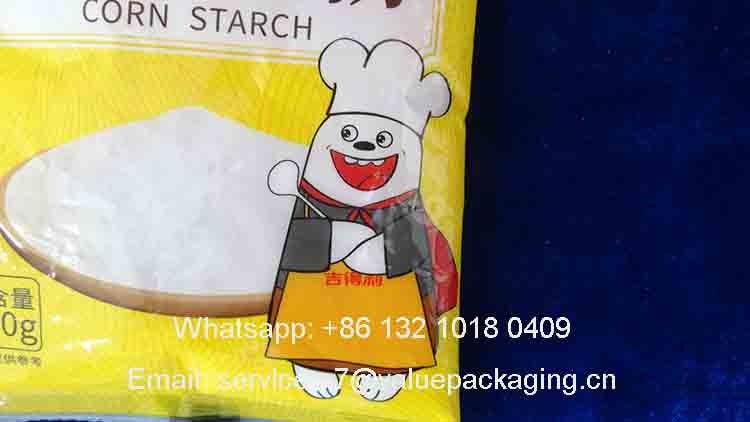
We focus on making pillow pouches with story-telling features for cornstarch food. These bags can boost product sales and build a good brand image. In this post, we’ll analyze the specific foil materials of the 180-gram corn starch poly sachet pouch packaging, hoping it can be a reference for your products.
Now, let’s get into the details of this 180-gram corn starch packaging film material.
Packaging Foil Materials
This foil material is a reinforced structure with excellent properties for corn starch packages. The foil structure is PET/LDPE, with a graphic as below.

The film material of the corn starch package is made of two layers. The printing layer is PET film, and the LDPE film works as the inner sealing layer. The thickness of the LDPE film should be adjusted to suit the requirements of a 180-gram cornstarch poly sachet pouch.
Next, We will talk further about each substrate film material.
PET Film
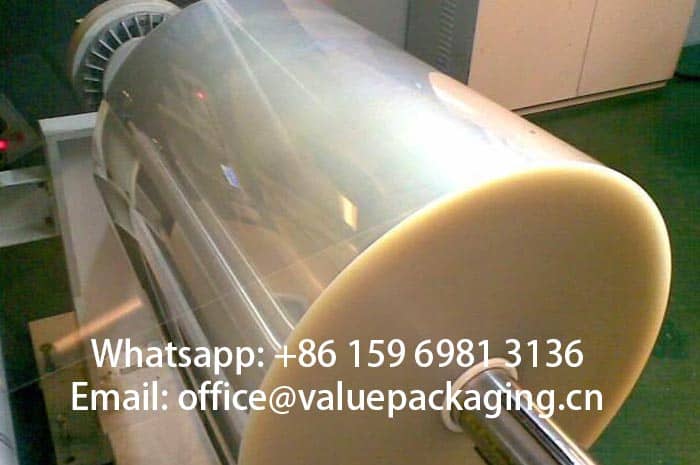
PET film, sometimes BOPET film, is one of the most commonly used print substrates in flexible packaging areas. With great optical clarity, high gloss, good chemical resistance, stable mechanical strength, excellent dimensional stability, and great printability, it can present the customer artwork print in great quality, and also provide great mechanical strength to the final package.
LDPE Film
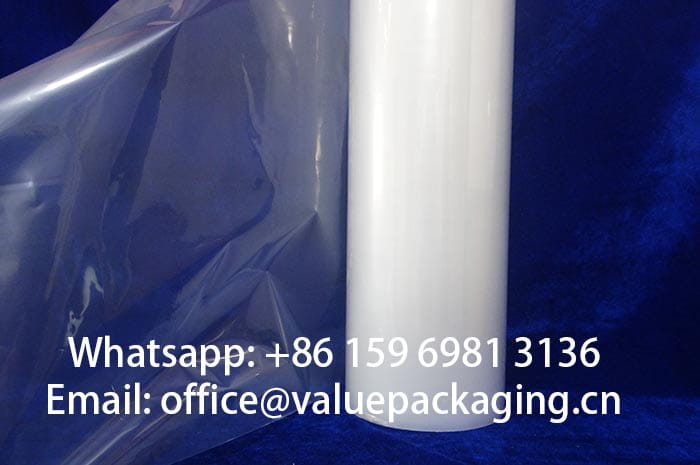
LDPE means low-density polyethylene film, which is the most used inner sealing layer for the bag. It can provide enough sealing strength and airtight properties for the final packages.LDPE film has good flexibility, can be bent at will, folding is not easy to break, and excellent performance in transparency, and can clearly display the product, because of this feature, It is popular in the field of food packaging. Like cookies and candy packaging, we can often see the LDPE film figure.
It also has good moisture resistance, and can effectively block the outside moisture, to protect product quality. At the same time, its chemical resistance is also relatively good, and it has a certain tolerance to many common chemical substances. However, LDPE film also has some limitations, such as its relatively low mechanical strength, tensile deformation, and even damage when subjected to large external forces, and its oxygen barrier is not particularly ideal, in some oxygen-sensitive product packaging, may need to be combined with other materials to improve the barrier performance.
These 2 layers are bonded together into a finished laminated foil material under the dry lamination or solvent-free lamination process. Usually, we describe the finished laminate as PET/LDPE foil.
Thickness
As you can see from the below picture, the overall thickness of this spout pouch is 0.235 mm, which equals to 118 microns for this laminated foil.
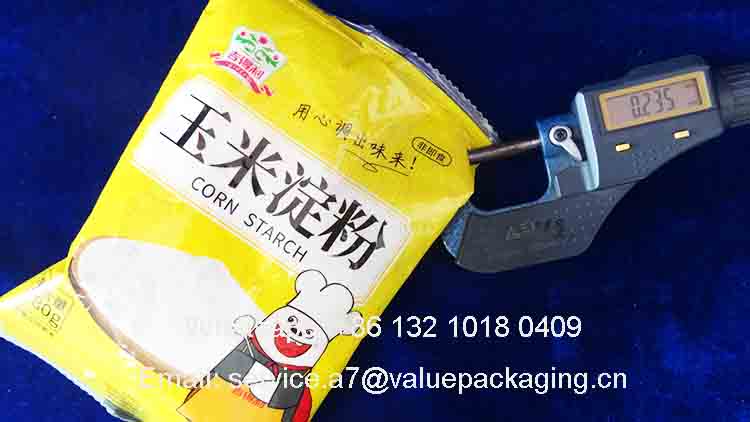
So, how does this foil structure perform when it is intended for corn starch bags? Will it break during the transit?
Mechanical Property
PET/LDPE composite packaging bag has good tensile strength. The PET layer provides a high tensile strength and modulus. so that the bag is not easily to be pulled broken. when it is subjected to a certain tensile force. For example, when handling bags filled with heavy items, the PET layer can withstand the tension generated by the weight of the item, preventing the bag from tearing on the handle or other stress areas.
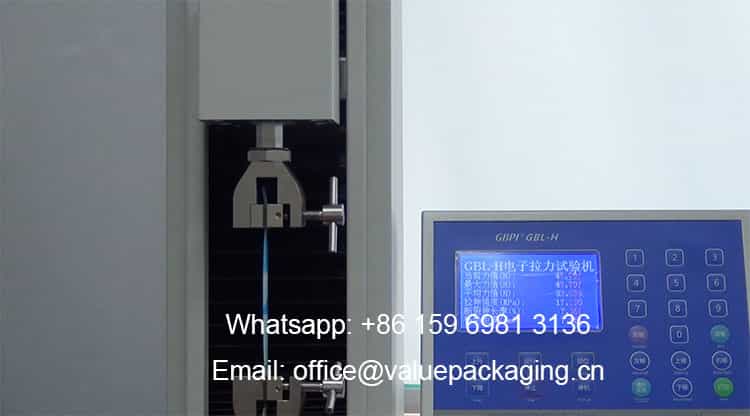
The LDPE layer has lower tensile strength than the PET layer, but its presence increases the overall flexibility of the bag. This means that when subjected to a small tensile force, the bag can have a certain degree of tensile deformation without breaking immediately so that the bag can adapt to a certain range of external force changes
We put the mechanical property of this 180-gram corn starch poly sachet pouch on our top priority in our manufacturing plant. Serious measures are taken in our QC system, to assure each order is finalized with the expected result.
To put it simply, a drop test of a filled package is one of the most reliable ways to check if the package may burst under sudden sharp forces.
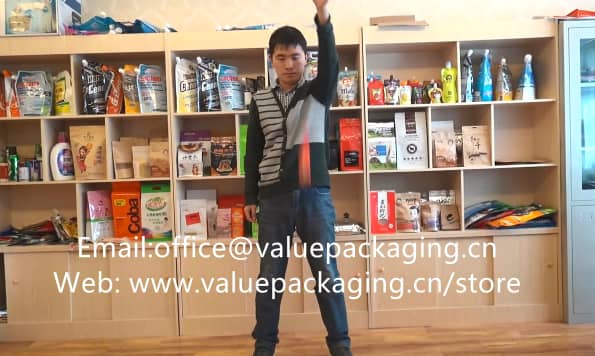
Sure, there are reinforced foil structures available for more robust packages.
- Craft Paper/LDPE
- BOPP/LDPE
- PET/PA/LDPE
Barrier Performance
Usually, the barrier performance of a multi-material laminate is evaluated by WVTR (short for water vapor transmission rate) and OTR (Oxygen Transmission Rate). The below table shows the typical value of the WVTR and OTR of the most common substrate films in flexible packaging.
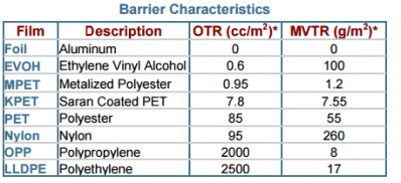
Based on our experience, PET/LDPE foil laminate will be able to meet most of the requirements for 180-gram corn starch. WVTR (short for water vapor transmission rate) and OTR (Oxygen Transmission Rate) are evaluated for this laminated foil, with typical values listed in the table below.
| Item | Standard | Unit | Typical Value |
| Water Vapor Transimission Rate | ASTM E 96 | g/m2/24hr | 0.85 |
| Oxygen Transmission Rate | ASTM D 372-99 | cc/m2/24hr | 1.2 |
Technical Data Sheet of 180 grams corn starch poly sachet package
Here, we attach the specification sheet of this 180-gram corn starch poly sachet pouch based on foil laminate PET/LDPE.
More tests are included in this specification sheet with items available listed as below.
- Yield (grams per square meter)
- Tensile Strength (Mpa)
- Elongation Rate (%)
- Coefficient of friction, short as COF
- Solvents Left (mg/m2 )
- Sealing Strength (N/15mm)
- Sealing Conditions
- Bond Strength (N/15mm)
- Burst Strength (J)
- Anti-Puncture ability (N)
- Drop Test Ability (cm)
- Anti-pressure ability (kgs)
- Water Vapor Transmission Rate (g/m2/24hr)
- Oxygen Transmission Rate (cc/m2/24hr)
Learn more about this foil laminate on our company website.
More Sustainable Materials Options
Along with the increasing burden of fossil-chemical polymer materials discarded into our environment, there is an unprecedented demand for sustainable packages which leads to a more eco-friendly activity of the business. Upon the recent investigation of the nut market, more and more consumers are more likely to purchase a product that acts toward environmental sustainability.
Compostable Packaging Materials
The compostable packages are based on plant-based fibers like cellulose, or bio-mass like corn starch, cassava, or sugarcane. The resins derived from these resources are usually named bio-polymer, which can break down into inorganic elements under the functions of algae, bacteria, and other microorganisms.
At present, we have developed several compostable foil materials that can be intended for powder food, as shown in the list below.
- Cellulose/Metallized Cellulose/PLA+PBAT Film
- Metallized Paper/Cellulose/VMPET/PLA+PBAT Film
- Kraft Paper/Metallized Cellulose/PLA+PBAT Film
Fully Recyclable Mono Materials
Compared with the high cost of compostable foil materials, fully recyclable materials sachets, and rolls are flooding the market for lightweight product packages in the market at much lower prices. Mono materials packages mean each layer of the multi-layer foil is made of the same resin, which can be easily processed in the human recycling system and reused for other applications. This recyclable materials sachet largely reduces the rate of plastic polymer film packages ending in landfills.
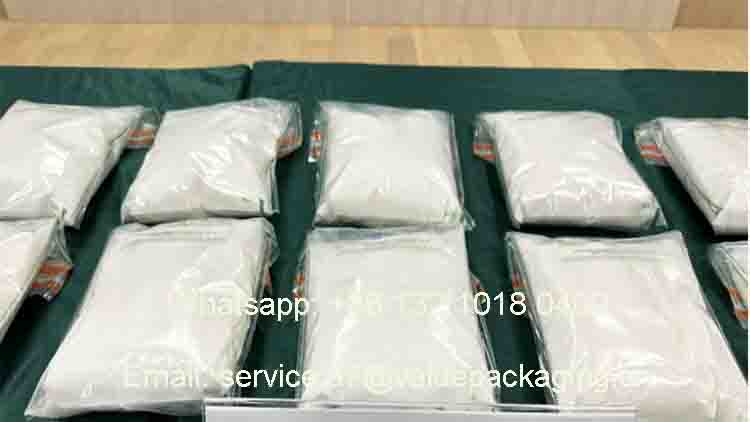
Nowadays, we have developed some bags based on single resin film materials, that can be found in good application for roasted sunflower seeds. We will give a further analysis in future posts.
That’s all for now. If you have any questions, feel free to contact us. Enjoy your time!

